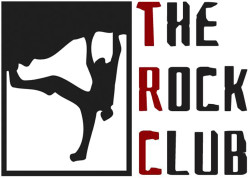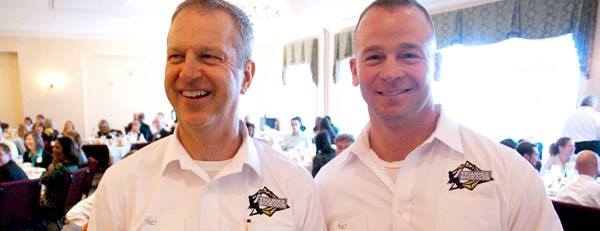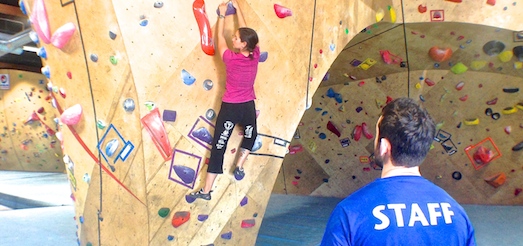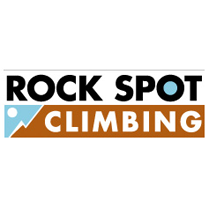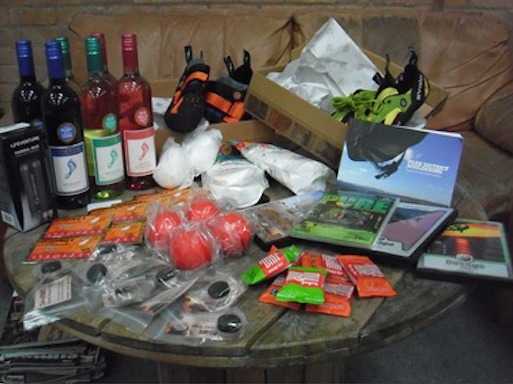Triangle Owners Awarded for Growth and Innovation
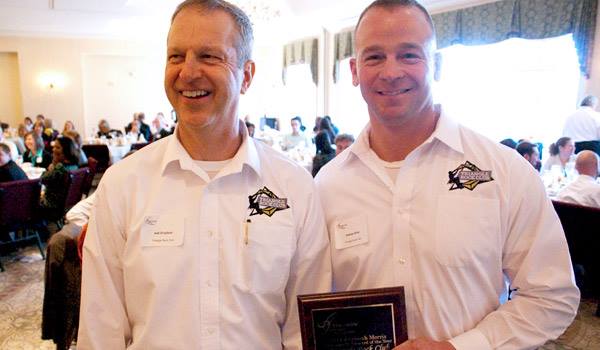
TRC has faced its share of challenges during the firm’s ascent. When scouting for the second location, there were already two parties vying for the space. Knowing it was crucial to their growth plan, Kratz and Graybeal quickly mapped out a strategy to educate the landlord on the strength and reputation of their company and promptly entered into negotiations for a lease-to-own option for the space. The pair opened the new facility within 5 ½ months of signing the lease.When Bizjournals.com asked about the company’s growth, Graybeal says he lacks a reference point for measurement. “We have no idea how fast anyone else is running the race, so we have no idea how much faster we are running,” Graybeal said. “There’s nothing else like this around here. We have relationships with our peers around the country, but we don’t compare ourselves to others. The only relevant comparison is how we’re doing relevant to our potential.” In 2013 TRC won the “Steady Growth and Profitability Award” from the Greater Raleigh Chamber of Commerce. Later this month CBJ will have an exclusive article from Joel Graybeal, a former mortgage banker, on ways for climbing gym developers to have better success at obtaining SBA and traditional bank loans.
Elevating Proper Falling Technique
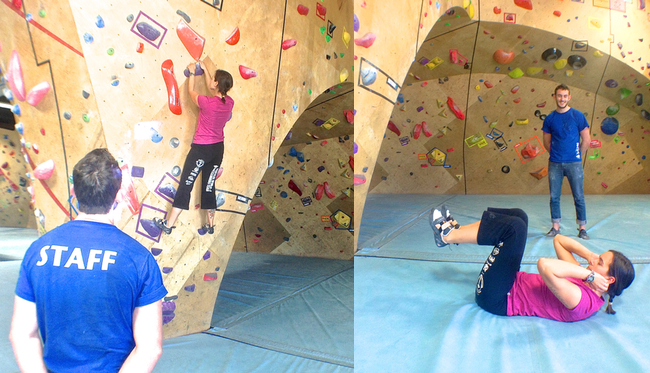 Improvements in the safety of padded flooring systems have greatly reduced the prevalence of bouldering accidents at indoor climbing facilities, yet falls in the bouldering area remain one of the primary sources of bodily injuries in climbing gyms. While some of these injuries are a result of risky behavior or poor choices, there are a sizable number that are a direct result of climbers not knowing how to fall properly.
These preventable accidents are the target of required fall training used by at least two facilities in America. One of those facilities, Rocks and Ropes in Tucson, Arizona introduced a Gymnastic Fall Orientation (GFO) in 2012 when they opened their second location, a bouldering-only facility.
Luke Bertelsen, General Manager of Rocks and Ropes, said in an email interview, “The orientation includes a review of our facility rules, safe bouldering protocol (do’s and don’ts of where you may sit or stand when you are not climbing), and a very hands-on fall orientation where we explain and demonstrate proper fall technique for our facility with our flooring system.”
Improvements in the safety of padded flooring systems have greatly reduced the prevalence of bouldering accidents at indoor climbing facilities, yet falls in the bouldering area remain one of the primary sources of bodily injuries in climbing gyms. While some of these injuries are a result of risky behavior or poor choices, there are a sizable number that are a direct result of climbers not knowing how to fall properly.
These preventable accidents are the target of required fall training used by at least two facilities in America. One of those facilities, Rocks and Ropes in Tucson, Arizona introduced a Gymnastic Fall Orientation (GFO) in 2012 when they opened their second location, a bouldering-only facility.
Luke Bertelsen, General Manager of Rocks and Ropes, said in an email interview, “The orientation includes a review of our facility rules, safe bouldering protocol (do’s and don’ts of where you may sit or stand when you are not climbing), and a very hands-on fall orientation where we explain and demonstrate proper fall technique for our facility with our flooring system.”
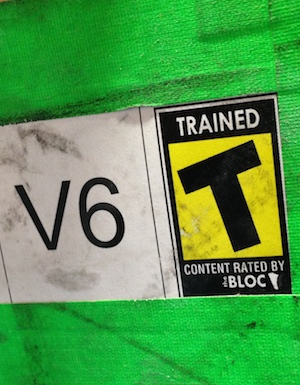
New Vegas Bouldering Gym
Press Release:
OldRock, Inc., has signed a lease in Las Vegas to develop an all-bouldering climbing gym. The facility is located on Valley View Boulevard, only minutes from the I-15 and Russell Rd. and from the I-215 and Decatur.
The new gym will be called The Refuge Climbing Center. The climbing wall design is already complete, and engineering should be done by mid-April. Construction of this 11,000 sq. ft. facility is planned to commence in July, and the grand opening is scheduled for this fall. Louie Anderson, the wall’s designer, will build the walls. Jeff Clapp, one of Rockreation’s founders, is project manager on the facility development, and Cody Hidler from Rockreation, Salt Lake City, will run the gym.
Clapp and Hidler, who have worked together for seven years, have established the goal of providing a great place to train, socialize, and get fit, and are committed to a culture where climbers of all abilities are part of the community.
The Do’s and Don’ts of Comp Sponsorship
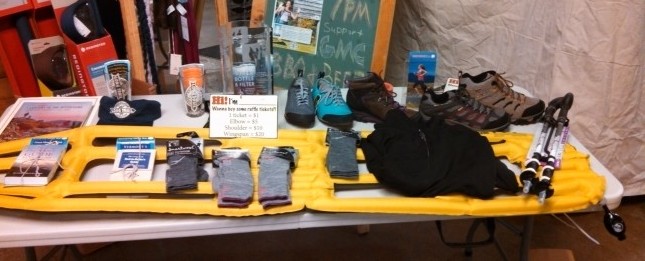
It’s Not Free Stuff, It’s a Partnership
Asking companies to sponsor your comp may feel a bit like begging. But it should be more like entering a business partnership than asking for a handout. A sponsorship needs to be beneficial to both parties, which means that each party receives a direct or indirect benefit from the arrangement. The first step to a successful sponsorship is to define what each sponsor will receive in return for their support. Here are are a few key questions you should be able to answer before contacting a potential sponsor:- How many people will be exposed to the sponsor? This includes all the competitors, spectators and volunteers at the event plus all the people that will exposed to the comp’s marketing campaign.
- Who will be attending the event? Provide as many specifics as you can about their location and demographics.
- How will the sponsor’s brand be promoted? Where will their logo be displayed? Will they be promoted on social media? Will they receive special mention during the comp? How will their product be displayed at the event?
- Will they receive any direct benefits, such as an agreement to purchase a specific amount of their product in the future?
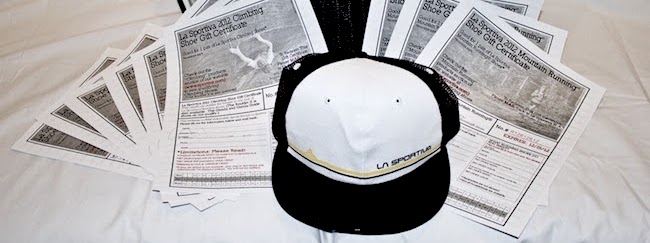
Leverage Retail Relationships
The next step is to decide which companies you are going to approach for sponsorship. The best place to start is with brands that you already do business with, since maintaining and growing that business relationship will be a factor in their decision to sponsor your event. Josh Helke from Organic Climbing, a manufacturer of bouldering crash pads, told CBJ that the best way to find sponsors is to approach the companies you already have a retail relationship with. “Once you have a history of purchasing from a company they will likely help with some prizes for your events,” said Helke. “Its tough for many companies to supply free items when you do not support their company through your retail shop.” Even if you do not have a pro shop you still have opportunities to establish partnerships with companies that provide your rental shoes and harness. Also don’t forget about the companies from which you buy rope and climbing holds; they may be especially eager to expose their brands since their products do not have prominent logos.Local Connection

Top Three Do’s and Don’ts of Sponsorship
DO
- Do send a clear explanation for how you will provide meaningful exposure for the sponsor’s product or brand.
- Do send polite reminders to sponsors about 2 weeks before your event if you have not received the agreed items.
- Do send post-event thank you’s to all sponsors and include a brief recap of the event.
DO NOT
- Do not request specific items unless you have a previous relationship with the company.
- Do not complain about the prizes you have received, that’s a guaranteed way to kill any future sponsorship deals.
- Do not let volunteers or employees take prizes that were intended for event participants (and never sell donated products).




